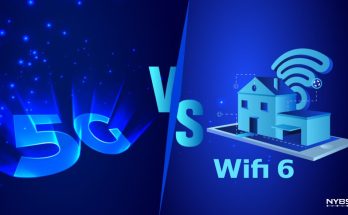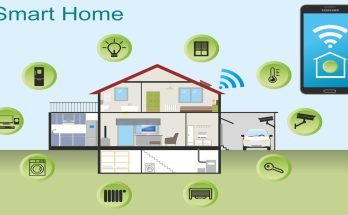Building a smart home once conjured images of extravagant budgets and complex installations, accessible only to tech enthusiasts or those with deep pockets. The allure of automated lighting, voice-controlled climate, and enhanced security often seemed just out of reach for the average homeowner. However, the landscape of smart home technology has evolved dramatically in recent years. What was once a luxury is now increasingly attainable, with a plethora of affordable devices and user-friendly platforms making it entirely possible to create a functional and efficient smart home without breaking the bank. The secret lies not in buying every cutting-edge gadget, but in a strategic, phased approach that prioritizes impact and compatibility, allowing you to enhance your living space intelligently and economically.
The fundamental principle of building a smart home on a budget is to **start small and prioritize impact**. Instead of attempting to automate your entire house at once, identify a few key areas where smart technology can offer the most immediate benefits and cost savings. This often begins with lighting and climate control. Smart light bulbs, for instance, are relatively inexpensive and can be controlled remotely, scheduled, or even integrated with voice assistants. Swapping out a few frequently used bulbs can significantly reduce energy consumption and add convenience. Similarly, a smart thermostat, while a slightly larger initial investment, can pay for itself quickly through optimized energy usage, learning your habits and adjusting temperatures to maximize efficiency when you’re away or asleep. These initial steps provide tangible benefits and help you understand how smart technology integrates into your daily life before committing to more extensive systems.
Next, focus on **compatibility and open ecosystems**. One of the biggest pitfalls for budget-conscious smart home builders is investing in devices that don’t “speak” to each other. This can lead to a fragmented system where you’re constantly juggling multiple apps and struggling to create seamless automations. Look for devices that are compatible with popular smart home platforms like Amazon Alexa, Google Home, or Apple HomeKit. Many affordable smart devices from various manufacturers are designed to integrate with these central hubs. For example, a smart plug from one brand might work perfectly with a smart speaker from another, allowing you to control non-smart devices (like a lamp or coffee maker) with voice commands or schedules. Prioritizing devices that adhere to widely adopted standards, such as Wi-Fi or Zigbee, ensures greater flexibility and scalability down the line without being locked into a single, potentially expensive, brand ecosystem.
A crucial strategy for cost-effective smart home integration is to **leverage smart plugs and existing appliances**. Not every device in your home needs to be inherently “smart.” A simple smart plug can transform a regular lamp, fan, or even an old coffee maker into a connected device. These plugs are typically very affordable and allow you to control power to an appliance remotely, schedule its operation, or integrate it into routines. Imagine setting your coffee maker to brew automatically when your smart light bulbs gradually brighten in the morning, creating a seamless wake-up experience. This approach avoids the higher cost of replacing perfectly functional appliances with their smart counterparts, maximizing your budget’s impact on automation.
Consider **DIY installation** wherever possible. Many smart home devices, particularly smart plugs, light bulbs, and even some security cameras, are designed for easy user installation, often requiring little more than plugging them in and connecting them to your home Wi-Fi network via an app. Avoiding professional installation fees can significantly reduce your overall expenditure. Online tutorials and community forums provide ample guidance for setting up most budget-friendly smart home gadgets. Of course, for more complex systems like whole-home wiring or advanced security systems, professional help might still be advisable, but for the initial stages of a budget-conscious smart home, DIY is a powerful enabler.
Furthermore, **monitor for sales and bundle deals**. The smart home market is dynamic, with new products constantly being released and existing ones frequently going on sale. Keep an eye out for seasonal sales events, holiday promotions, or bundle deals offered by retailers and manufacturers. Subscribing to newsletters from your favorite tech brands or smart home blogs can alert you to upcoming discounts. Sometimes, purchasing starter kits that include a hub and a few devices can offer better value than individual components. Patience and strategic timing can yield significant savings.
Finally, **focus on practical benefits and energy savings** as your primary motivators. A smart home on a budget isn’t about having the flashiest tech; it’s about making your life easier, more secure, and more energy-efficient. Automating lights to turn off when a room is empty, scheduling your thermostat to reduce heating/cooling when you’re away, or receiving alerts if a door is left ajar can translate into tangible savings on utility bills and enhanced peace of mind. These practical applications demonstrate the real-world value of your smart home investments, justifying each expenditure with clear benefits rather than just novelty.
In conclusion, building a smart home no longer requires an exorbitant budget or advanced technical prowess. By strategically starting small with high-impact areas, prioritizing device compatibility, leveraging affordable smart plugs, embracing DIY installation, and capitalizing on sales, anyone can gradually transform their living space into an intelligent, efficient, and convenient environment. It’s an incremental journey of thoughtful integration, proving that smart living is not an exclusive luxury, but an accessible reality for the budget-conscious homeowner.




